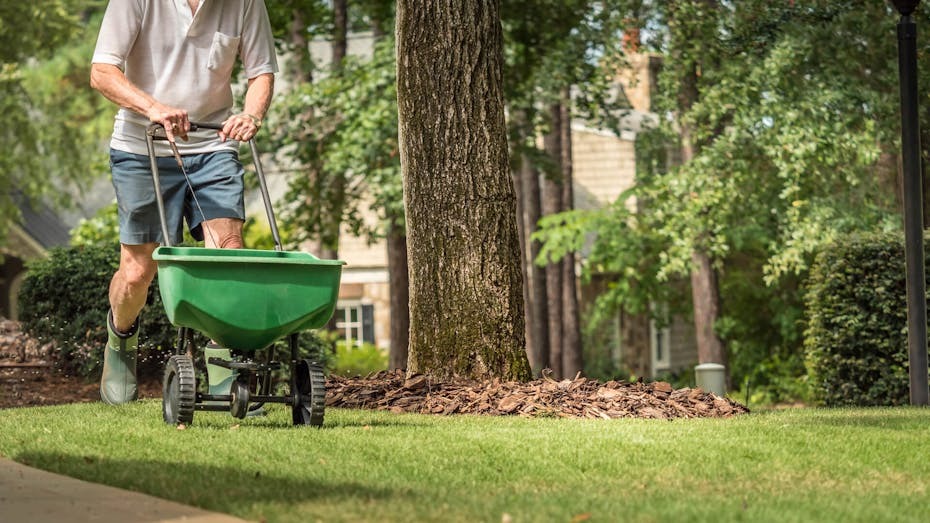
How to Over Sow with Grass Seed
Good soil contact is essential so follow our over sowing procedure to make you lawn better than ever in as short a time as possible
Over seeding an existing lawn requires a little more attention than seeding a new lawn.
How Much Grass Seed?
When you’ve decided which lawn seed to use, the instructions should tell you the rate at which it needs to be applied. Quite often the over seeding rate is lower than the rate for starting a new lawn though sometimes adding more, particularly if rye grass is included, will speed recovery. However, if you are trying to improve your lawn by changing the type of seed then adding more will cause more of a change.
Do NOT automatically assume more is better! I’ve seen patch repairs done where you can’t see the soil for grass seed. This will cause extremely dense growth that will stick out like a sore thumb. If in doubt stick to about 10 to 20 seeds per square inch.
The next page will cover all the variables for seeding rates.
Over-seeding Procedure
- If the lawn is rather dry and rain is unlikely, start building a reserve of water in the soil by running the sprinkler for an hour or two a day for several days depending on how dry it has been. You don’t need soggy ground but seeds and seedlings need ‘some’ water to germinate and root. This should be done after renovating (raking, scarifying or aerating) but before seeding and fertilising
- Mow the lawn close without scalping just prior to over seeding
- Split the seed into two lots if you are confident of spreading evenly, otherwise split into four equal lots
- Spread the seed by hand or spreader working in a different direction for each lot e.g. north to south, then south to north and east to west etc. This will ensure even coverage. A smaller than recommended setting (say 1/3 to 1/2 open) on the spreader will prevent you running out of seed too quickly but means more trips up and down the lawn.
- If there is quite a lot of grass sticking out of the lawn after scarifying then the seed you are adding will stick on it preventing contact with the soil – not good. If you can, drag a garden hose, a piece of wire mesh fencing or a large brush over the lawn to knock the seed off the grass and into the soil
- Next roll the lawn. If you haven’t got a roller but you have a lawn mower with a roller this will do just fine. Might be best with the engine off though! If you don’t have either and the lawn is not too big, start treading up and down the lawn. Good seed soil contact will improve the result no end
- Now fertilise the lawn using a seasonal fertiliser which will benefit the old and new grass. Fertiliser can be added at any point in the above procedure. For convenience do it at this stage, however, if you have any doubt that conditions may turn against you (dry or cold in particular) fertilise once the seed has germinated.
- If at all possible give it a light watering as often as possible every day for a couple of weeks if there is no rain. Enough to keep the seed from drying without washing it away. If watering is impossible then try and schedule your seeding for a wet period
- In dry conditions covering the area (after building a reservoir of moisture) for 10-14 days with large sheets of polythene available from builders merchants is a very sensible thing to do. No watering during this period will be required. Nice!
- Once the seedlings are a week old water less frequently but for twice as
long. At about the 4 week mark water twice a week for about 15 minutes in any one place. After 8 weeks just ensure the lawn doesn't get overly dry by watering more deeply. See Watering the Lawn - Unlike starting a new lawn you should mow your lawn as normal. However, to reduce stress on the new grasses mow at least weekly for the first 2 months, no lower than 1” and preferably at 1.5″ to 2″, with sharp blades on dry grass
NOTE: Because of the elongated shape of grass seed it does not ‘flow’ consistently through rotary or broadcast spreaders. This means that though a spreader is an excellent method for spreading seed settings are unreliable which is why we suggest a one third open setting to start and applying in several lots to ensure consistent even coverage.